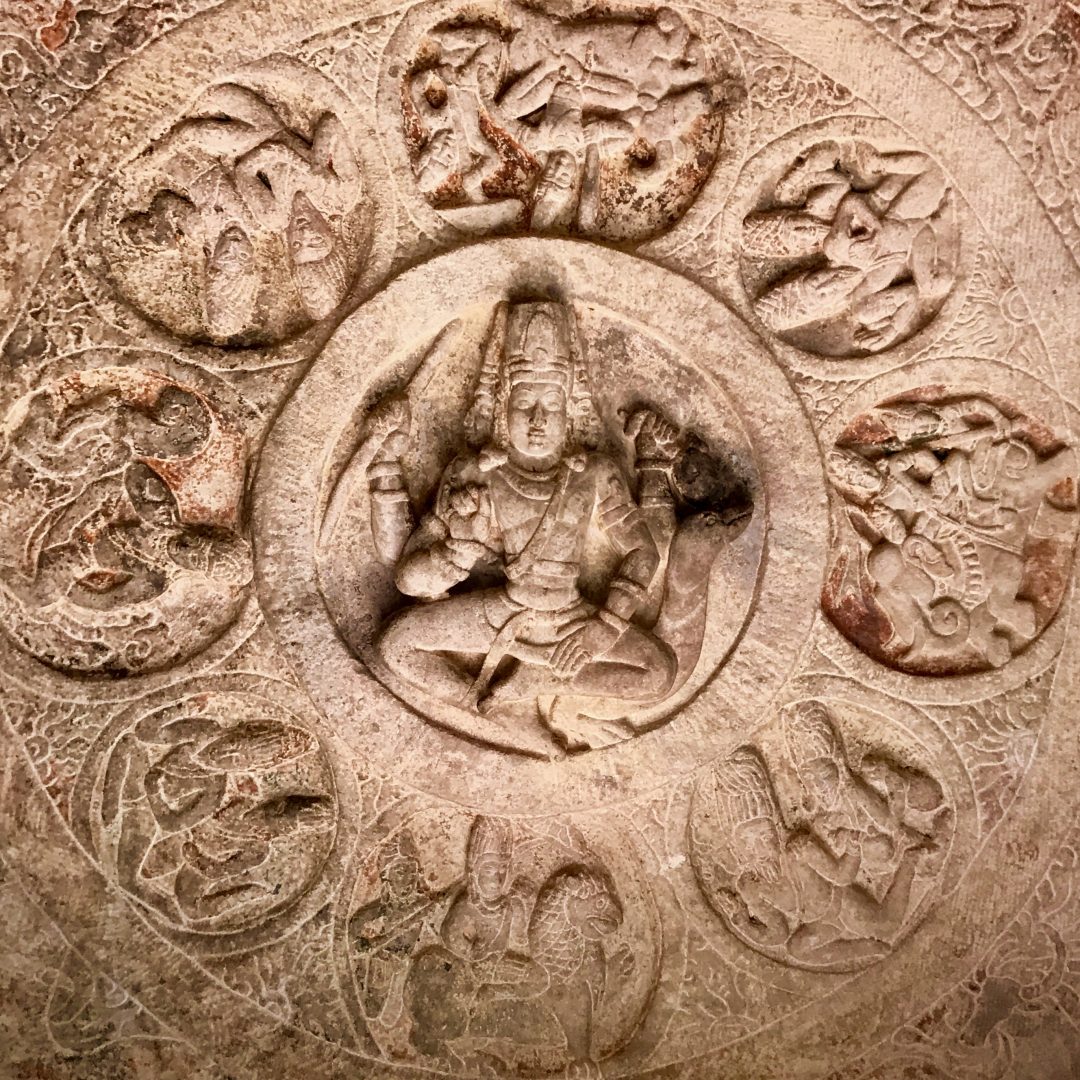Not unlike the eternal soul that reincarnates into different beings, Arya Dharma itself has gone through several important metamorphoses over the thousands of years it’s been around. Even the core of the oldest of all Hindu scriptures the Vedas consists of parts that were written over many decades (even centuries!) and by different authors.
Most of the Vedas are considered to be shruti or revealed (lit. heard) divine knowledge. It was if the Universe itself spoke to the ancient holy men, which is really the main reason why the Vedas were only spoken and not written down for several centuries. The most ancient part of the Rig Veda is mainly devotional in nature and uses hymns and songs to tell a beautiful and complex creation story. It also describes the nature and order of the Universe.
A very important part of the ancient Hindu tradition is a collection of smritis, or sacred laws. One of the most famous is Manusmriti, or Laws of Manu. Manu is Adam’s counterpart in the Vedic tradition in that he is the first human being and is created in god’s image. His purpose is not only to give birth to the human race, but to create civilization. And to have a well-functioning society there must be law and order. While the main focus of the shruti in the Vedas is to describe the Vedic world view, the goal of the smritis is to set forth the corresponding way of life.
The Vedic society was a very rigid and restrictive one.
The order of the Universe demanded that humans have some very particular social duties (assigned according to castes) and that they perform only those duties that are peculiar to their social roles. Also, there were many religious duties that were meant to purify one’s spirit, pay tribute to god or gods, etc. There was a right and wrong way to do almost everything, and even minor deviations from tradition were punishable offenses. The focus of the Vedic tradition was on propriety, religiosity, and ostensible piety. The goal of every person was understood to be the same: finding a way to improve one’s karma enough to get a better deal in the next life or to possibly get a reward of going to heaven for a while.
As people’s circumstances and world view changed, so did the religion.
In the age of the epics, we get beautiful narratives of the works of gods and heroes. These serve not only to tell exciting stories about interesting characters but to also teach some important spiritual lessons. Because the epics are more metaphorical in nature they promote more independent thought and less conformity than the hymns of the Vedas.
 One of the most magnificent and influential works in Hindu sacred literature is the Bhagavad Gita (Song of God). It’s part of the Mahabharata, an immense epic about a dynasty of rulers, called Bharata. In the Gita Krishna, an avatar of the creator-god teaches a warrior-prince about spirituality. The message of the Gita is twofold: firstly, righteousness and religiosity are not the same, thus the spirit of the Vedas is more important than the letter of the Vedas; secondly, liberation from reincarnation is possible through enlightenment.
One of the most magnificent and influential works in Hindu sacred literature is the Bhagavad Gita (Song of God). It’s part of the Mahabharata, an immense epic about a dynasty of rulers, called Bharata. In the Gita Krishna, an avatar of the creator-god teaches a warrior-prince about spirituality. The message of the Gita is twofold: firstly, righteousness and religiosity are not the same, thus the spirit of the Vedas is more important than the letter of the Vedas; secondly, liberation from reincarnation is possible through enlightenment.
There are also the Upanishads, which, collectively, epitomize a departure from the rigid way of life of the smritis and the pessimistic world view of the Vedas. These texts represent a philosophical period in the development of Hinduism during which spirituality and intellect became the necessary tools of a devout Hindu and many religious rites and rituals fell out of fashion.
Today, many Hindus recognize the Gita as one of the most authoritative religious texts. But because there are so many scriptures to choose from different people practice Hinduism differently.






